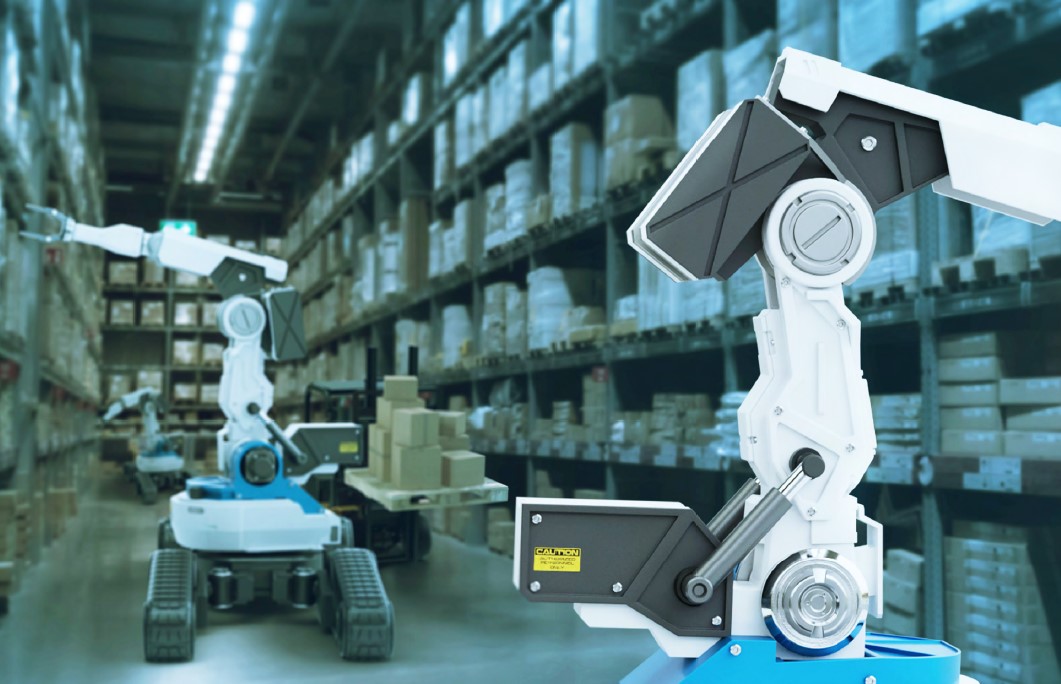Supply Chain
How technology is shaping the healthcare supply chain in 2023
When COVID-19 was beginning to shut down countries around the world in early 2020, supply chain shortages quickly followed. This became a challenge for the healthcare sector in Saudi Arabia as personal protective equipment, respirators, and even certain medicines saw limited availability across the country1.
Now, more than two years later, a complex web of dynamic factors continues to cause global supply chain challenges, including labour disruptions and shortages, ongoing lockdowns, transportation issues, a lack of raw materials, rising oil prices, surging inflation, and an ongoing war. While Saudi Arabia’s supply chain industry is showing strong signs of recovery, these realities are limiting its pace2. To remain resilient against supply chain disruptions, the healthcare industry should further embrace emerging technology, such as cloud-based solutions, artificial intelligence, and the blockchain.
After all, the Kingdom is investing USD$147 billion into the growth of the logistics industry over the next nine years3. This will reinforce its position as the leading transportation and logistics operator in the Middle East and North Africa. By 2024, the international logistics market is estimated to be worth US $15.5 trillion and Saudi Arabia is well positioned to be a global powerhouse of logistics.
Using cloud technology to improve data management and collaboration
Dated, improper or poor data management within healthcare organizations disrupts the supply chain. A global survey found that 32% of organizations still use manual processes such as telephones, e-mails and spreadsheets to collaborate with internal stakeholders and external partners on their supply chain needs 4. While another 48% use legacy technology, like on-premises supplier portals and electronic data interchange to collaborate. By improving the data foundation with better data management technology, healthcare organizations will improve value-based care.

Embracing cloud technology is one way to help improve inventory data management. A cloud-centric healthcare supply chain management system allows all data to reside on a single platform and offers computing power that is significantly faster compared to legacy systems5. In turn, it increases visibility and transparency into an organization’s usage patterns and allows for a reduction in the time required to manage materials.
Cloud technology also drives innovation by providing more cost-effective access to cutting-edge technology, such as artificial intelligence and digital threads. Surveys have found that organizations that connect data with a digital thread across the value chain create new approaches to operating models, services, and patient outcomes6.
Another way to improve data management is to increase data sharing both with internal teams and with external partners using secure technology. This can provide opportunities to analyze the data to identify weaknesses in the supply chain, offer predictive modeling to prevent future issues and create new recommendations for improving overall supply chain management7. The National Company for the Unified Procurement of Medicines, Devices, and Medical Supplies (NUPCO) is an example of an external partner using organizations’ data to provide statistical forecasts for all hospitals to help provide long-term visibility into demand and inventories for planning8.
Greater data sharing with internal teams will allow healthcare organizations to focus on improving patient outcomes while controlling costs. Closer collaboration between the clinical and finance teams in a hospital will help increase understanding of the full implications of supply chain impacts9. It will unlock the ability to better forecast clinical supply needs based on past consumption patterns and planned patient procedures as well as increase the ability to adjust quickly in case of abrupt changes.
Lastly, real-time inventory management and asset tracking can help healthcare organizations better understand the critical connection between clinical needs and supply chain. When more organizations fully embrace real-time location systems (RTLS) for inventory management, there will be even greater accuracy and transparency around everything from medications and medical devices to specimens, staff and patients. A recent study found that RTLS is a useful and effective approach to improve healthcare processes, workflow analysis, and patient safety10.

Artificial intelligence and machine learning will combat challenges
With the adoption of cloud technology, healthcare organizations can embrace machine learning (ML) and artificial intelligence (AI) tools to help predict and combat supply chain challenges and make informed medical or business decisions more quickly11.
AI and ML allow for data to be aggregated across multiple organizations and sources then rapidly pull insights from that data so healthcare organizations can be more predictive instead of reactive when it comes to supply chain issues. Insights can help avoid shortages and over expenditures in medical supplies, medicines, and equipment by detecting patterns of demand and improving ordering decisions by understanding future caseload.
AI and ML can also be leveraged to create more personalized health products and services for patients, which will support better patient outcomes12. AI can be used to analyze the records of past patients and suggest treatment methods that will work best for an individual patient. This helps to increase the accuracy of forecasting for procurement.

AI and ML will continue to help healthcare organizations manage costs by optimizing product sourcing, purchases and invoices, as well as inventory management. Lastly, AI can help improve the productivity and efficiency of the hospital staff by lowering employee burnout and improving employee satisfaction.
Blockchain technology will increase efficiency
A blockchain is a digital ledger or database where encrypted blocks of digital asset data are stored and chained together, forming a chronological single-source-of-truth for the data. Any changes made are documented and shared, which increases integrity and trust13.
Blockchain technology is already in use in the healthcare industry in Saudi Arabia, although not yet in supply chains. The King Faisal Specialist Hospital and Research Centre, (KFSHRC) now uses blockchain technology for its digital credentialing of all residents that use its facilities14.
For healthcare supply chains, blockchain-based solutions promise opportunities for decentralized record-keeping and tracking of transactions, the immutability of multi-direction transactions, as well as increased overall efficiency and the removal of unnecessary intermediaries15.
One example of how a blockchain-based solution could improve efficiency and patient outcomes is in the pharmaceuticals sector. Advancements in technology have made it easier for pharmaceutical counterfeiting of both the product packaging and the pharmaceutical itself16. A blockchain-based solution can ensure that products are authentic through data sharing and visibility into a product’s journey from the production line to the patient17. This makes it possible to decrease fraud through an immutable record of events. It can also reduce risks to patients by identifying pharmaceuticals under recall more accurately and faster than previous solutions.

Additionally, blockchain-based solutions would facilitate more secure, accurate information sharing between healthcare organizations and medical device manufacturers and pharmaceutical companies. This would allow providers and suppliers to engage in a more effective feedback loop, which could increase patient outcomes over time18.
While there is optimism over blockchain technology in healthcare supply chains, questions remain about the cost to implement it as well as how the blockchain would interact with existing supply chain data technology.
Improving access to quality healthcare and building a world-class infrastructure is a key pillar of Saudi Arabia’s Vision 203019. The healthcare industry can support the goal more aggressively by embracing emerging technologies like cloud, AI and ML and blockchain-based solutions, to build a more resilient, efficient, patient-centered and cost-effective healthcare supply chain in Saudi Arabia.

REFERENCES
[1] https://pubmed.ncbi.nlm.nih.gov/33800012/
[2] https://www.arabnews.com/node/2110756/business-economy
[3] https://www.cityscape-intelligence.com/saudi-industrial/usd-147-billion-push-transportation-and-logistics-ksa
[4] https://www.supplychainbrain.com/articles/34201-four-reasons-to-embrace-cloud-technology-for-real-time-supply-chain-collaboration
[5] https://www.comparethecloud.net/articles/building-supply-chain-resilience-with-cloud-apps/
[6] https://www.accenture.com/ca-en/insights/supply-chain-operations/supply-chain-transformation-cloud
[7] https://www.mckinsey.com/capabilities/operations/our-insights/supply-chains-to-build-resilience-manage-proactively
[8] https://www.gccbusinessnews.com/saudi-arabias-nupco-digitizes-supply-chain-solutions-with-blue-yonder
[9] https://vuemed.com/healthcare-supply-chain-trends-2022/
[10] https://www.ncbi.nlm.nih.gov/pmc/articles/PMC8661418/
[11] https://www.technologyreview.com/2022/03/09/1046976/ai-is-helping-treat-healthcare-as-if-its-a-supply-chain-problem/
[12] https://www.emdgroup.com/en/research/science-space/envisioning-tomorrow/precision-medicine/ai-in-supply-chain.html
[13] https://www.ibm.com/topics/what-is-blockchain
[14] https://news.bitcoin.com/saudi-arabia-medical-institution-implements-blockchain-based-digital-credentialing-solution/
[15] https://www.sciencedirect.com/science/article/pii/S2590291122000821
[16] https://www.mordorintelligence.com/industry-reports/blockchain-market-in-healthcare#:~:text=The%20blockchain%20market%20in%20healthcare
%20was%20valued%20at%20USD%202.12,forecast%20period%2C%202021%20%2D%202026.
[17] https://www.ibm.com/blockchain/resources/transparent-supply/pharma/
[18] https://www.pharmacytimes.com/view/the-case-for-leveraging-blockchain-to-improve-the-global-health-supply-chain
[19] https://www.vision2030.gov.sa/v2030/vrps/hstp/


